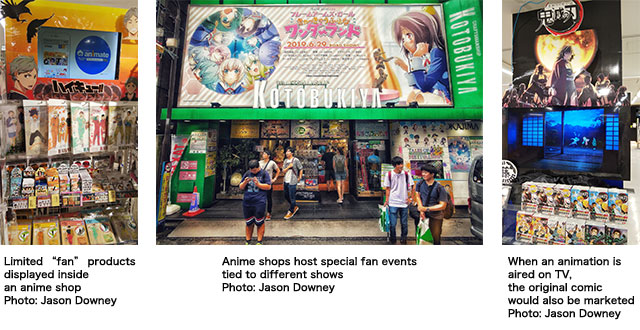News
September - What Makes Anime Anime? Updated in September 2019
In July 2019, Japan made headlines around the world because of the tragic attack at KyoAni or Kyoto Animation, one of the country’s most beloved anime studios. Anime, short for animation, is one of Japan’s most popular exports. Many works are dubbed or subtitled into different languages every year.
The first thing to know is, anime has always been heavily influenced by manga, or Japanese comics. Art styles and storytelling genres have been established and developed over the decades in manga first, and then adopted by anime as the industry grew.
Anime as it’s known today started in the 1960s. It was a response to a new opportunity—televisions in 95% of Japanese homes—and financial and time constraints. Tezuka Osamu (手塚治虫), the most influential manga artist in Japan, started an animation studio called Mushi Pro (虫プロ) in 1961. In order to win contracts with TV broadcasters, Tezuka needed to outbid the large entertainment company Toei. He did this by proposing a shoestring budget for his show Astro Boy (Tetsu-wan Atomu). Having won the bidding war, Mushi Pro now had to produce an animated TV series with an unmanageably small budget!
The solutions the company implemented would become industry standards for Japanese animation in its early years. Some of these techniques include: significantly fewer frames per second of animation; frequent use of still images; and recycling of animated sequences for later use. While none of these techniques to save time and money were original, their standardization in Japanese animation studios launched a new art form—the world-famous “anime” style.
But the industry’s roots in cost-cutting didn’t end here. Animators have traditionally been overworked and underpaid. The typical workweek for an animator is 10 hours per day, 6 days per week, not including “crunch time” periods when studios are rushing to meet a deadline. Animators regularly work themselves sick during these periods. Average animators in Japan are said to earn $25,000-$34,000 depending on experience.
Despite these working conditions, the industry persists─and has grown into a multi-trillion-yen global behemoth─because of passionate animators. Over the decades, these efforts have resulted in world-famous productions like Gundam, Dragon Ball, Sailor Moon, Pokémon, Neon Genesis Evangelion, One Piece, Detective Conan, Haikyu, and Doraemon—just to name a few!

One studio that was famous for high quality productions and fair working conditions was Kyoto Animation. Founded in 1981 by Yoko Hatta, a former animator for Mushi Pro, Kyoto Animation contained its own animation school, paid its workers full-time instead of as freelancers, and was a leader in hiring and promoting women animators. It produced several hit shows and movies since 2003, including The Melancholy of Haruhi Suzumiya and Sound! Euphonium. Violet Evergarden can now be viewed through Netflix.
On July 18, the Kyoto Animation building was burned down in an act of arson. Thirty-five staff members died from the attack. Many ardent fans from around the world, including Apple CEO Tim Cook mourned the destruction and loss. According to Sankei Shimbun, donations to KyoAni has reached almost 2 billion yen. On August 8, KyoAni CEO Hideaki Hatta announced through the studio’s official website: “Please give us some time…We promise that Kyoto Animation will continue to create animation that help people have dreams, hope…I assure you that Kyoto Animation will not give up, we will not go quietly into the night…we will not vanish without a fight!”







